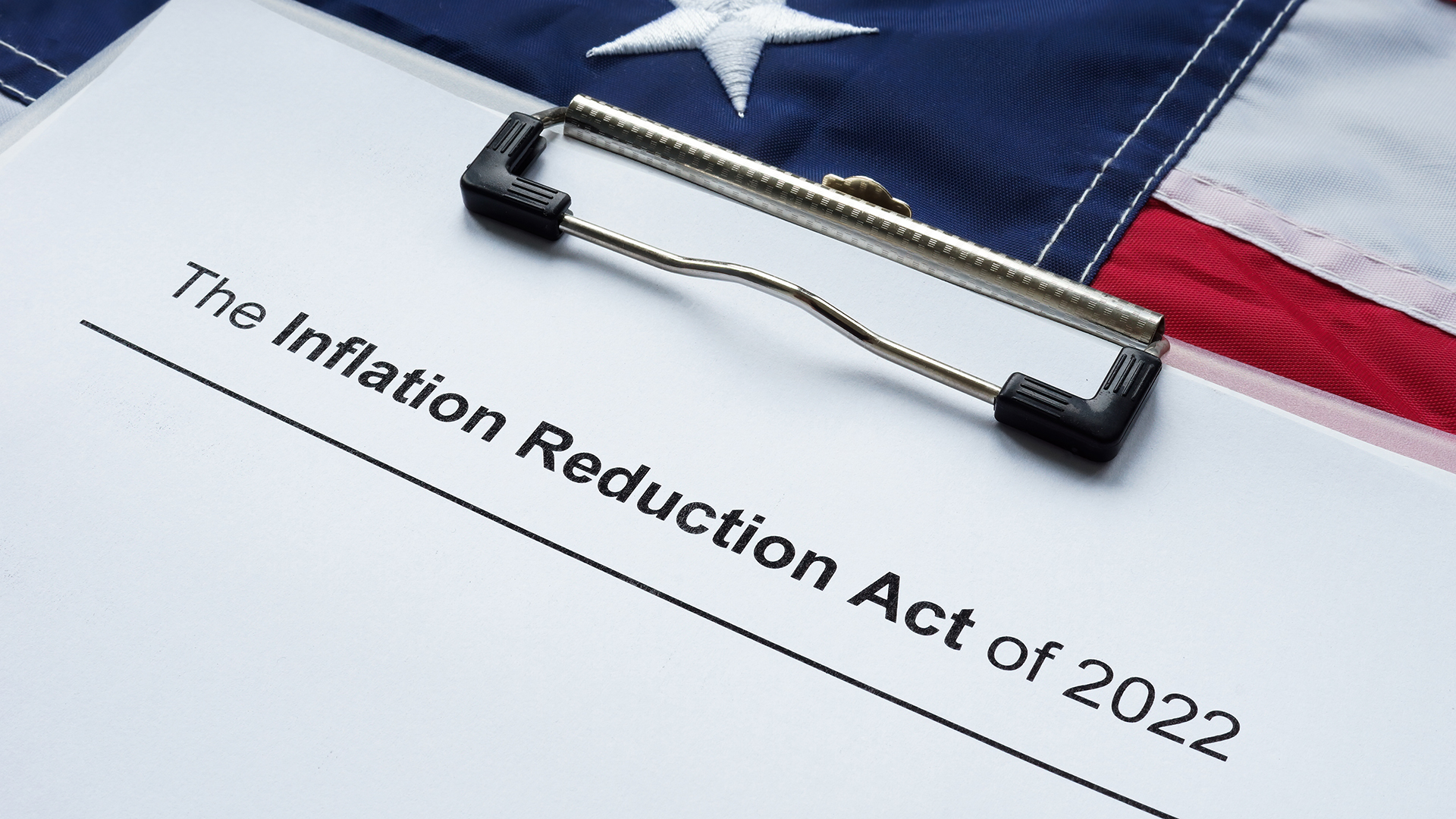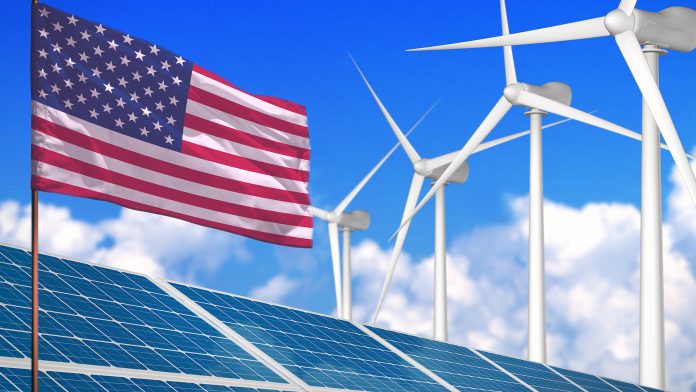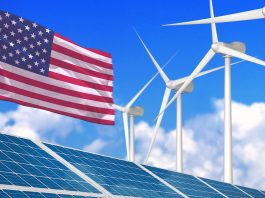The recent passage of the Inflation Reduction Act (IRA) and the Bipartisan Infrastructure Law (BIL) signals a profound transformation for the US energy sector.
With an anticipated infusion of over $430bn in climate and clean energy programmes over the next decade, these legislations are designed to expedite the shift towards a decarbonised energy system.
Key stipulations encompass investments and tax credits specifically for zero-carbon electricity generation and storage, thereby stimulating the deployment of clean energy. This article assesses the potential impacts of the IRA and BIL on the US energy system, considering a myriad of policy implementations and market conditions.
A crucial aspect of this examination will also be an exploration of the role of advanced nuclear reactors in this energy transition, offering a glimpse into potential market opportunities. Undeniably, the outcomes of this analysis will offer crucial insights into the practicality, costs, and benefits of cultivating renewable resources, electricity transmission, and carbon dioxide infrastructure under these fresh policy frameworks.
Understanding the Inflation Reduction Act
Delving into the intricacies of the Inflation Reduction Act of 2022, it is crucial to note that this legislation, alongside the Bipartisan Infrastructure Law, represents a significant investment by the US Federal Government in modernising and decarbonising the nation’s energy system. These laws are designed to drive a massive shift in the energy industry, with far-reaching policy implications and economic effects.
The policy implications of the IRAS and BIL are substantial. They aim to accelerate the transition to a cleaner, more sustainable energy system, driving regulatory changes to reshape the industry. These changes include incentivising clean energy deployment and creating a favourable tax environment for zero-carbon-emitting electricity generation and storage.
The economic effects of these laws are expected to be profound. By incentivising investment in clean energy, they aim to stimulate economic growth, create jobs, and reduce dependence on fossil fuels. They also aim to reduce consumer costs, making clean energy more affordable and accessible.

From an industry perspective, the new laws present both challenges and opportunities. They necessitate a shift towards cleaner energy sources, requiring significant investment in new technologies and infrastructure. However, they also open up new market opportunities for companies that can innovate and adapt.
Stakeholder engagement is essential in implementing these laws effectively. It is necessary to work collaboratively with all stakeholders, including the energy industry, environmental groups, regulators, and the wider public, to ensure that the transition to a cleaner energy future is achieved in a way that benefits everyone. This requires open dialogue, mutual understanding, and a shared commitment to achieving climate goals.
Key provisions and incentives
After thoroughly understanding the Inflation Reduction Act and its broad policy implications, it is essential to highlight the key provisions and incentives embedded within these laws designed to stimulate clean energy deployment. A critical component of these laws is their use of tax credit benefits. These benefits serve as clean energy incentives, promoting zero-carbon electricity generation and storage technology investment.
Investment and production tax credits (ITC and PTC) offer significant financial advantages to industries incorporating clean energy technologies. These tax credits, coupled with CO2 capture and storage incentives, form a robust framework geared towards accelerating the transition to a low-carbon energy system. The incentives are not limited to large-scale utility providers. They also encourage smaller entities to invest in clean energy, promoting a widespread, grassroots transition to cleaner energy sources.
Another noteworthy aspect is the emphasis on innovation promotion. The legislation provides the fiscal stimulus required for research and development in clean energy technologies. This provision is pivotal in driving the technological advancements necessary to achieve a sustainable energy system.
Scenario analysis and assessments
To fully comprehend the potential impacts of the Inflation Reduction Act and the Bipartisan Infrastructure Law on the US energy system, it’s essential to examine two distinct scenarios: the no new policy scenario and the IRA-BIL scenario. These scenarios represent different policy enactments and their implications on market dynamics, technology assessment, regulatory challenges, and investment opportunities.
The no new policy scenario provides a baseline, assuming current policies continue without the introduction of the IRA or BIL. Conversely, the IRA-BIL scenario incorporates the policy changes proposed by both legislations.
| Scenario | Policy Implications | Market Dynamics |
| No new policy | Reflects regulatory challenges of current policies | Depicts current market dynamics without IRA-BIL |
| IRA-BIL | Highlights new policy implications | Shows potential changes in market dynamics |
Both scenarios consider future variables such as electricity market conditions, technology costs, natural gas prices, and renewable resource development. The IRA-BIL scenario, for example, assumes substantial investment opportunities in clean energy technologies driven by the policy incentives of the IRA and BIL.
US energy system impact evaluation
Evaluating the potential impacts of the Inflation Reduction Act and the Bipartisan Infrastructure Law on the US energy system reveals far-reaching implications across various sectors.
Primarily, these legislations could significantly improve grid resilience. By encouraging investments in modern infrastructure and advanced technologies, the potential for system failures and outages could be reduced. This is particularly crucial in an era where climate change poses increased threats to the stability of energy systems.
Secondly, these legislations promote renewable integration. The push for clean energy sources such as wind, solar, and hydroelectric power is key to a sustainable energy future. The laws facilitate this by creating favourable conditions for the deployment and integration of these resources into the existing grid.

Thirdly, the laws enable greater energy efficiency. By incentivising businesses and households to adopt energy-efficient practices and technologies, energy consumption can be reduced while maintaining or improving service levels.
Fourthly, carbon pricing mechanisms embedded within these laws send a clear signal to the market about the true cost of carbon emissions. This drives businesses to innovate and adopt cleaner technologies, fostering a culture of technology innovation.
Ultimately, the Inflation Reduction Act and the Bipartisan Infrastructure Law have the potential to reshape the US energy system profoundly. They could guide it towards a path of resilience, efficiency, and sustainability while driving the innovation necessary for a low-carbon future.
Emission reduction potential
Building on the potential effects of the Inflation Reduction Act and the Bipartisan Infrastructure Law on the US energy system, an important aspect to consider is their potential for emissions reduction. These legislations provide a framework for emission reduction strategies, advancing clean energy benefits and influencing sectoral impacts. They also facilitate renewable integration and establish decarbonisation pathways.
The table below presents an overview of key emission reduction strategies and their potential impacts:
| Emission Reduction Strategies | Potential Impacts |
| Clean energy deployment | Accelerates the transition towards renewable sources, reducing reliance on fossil fuels |
| Energy efficiency measures | Reduces energy consumption, leading to lower emissions |
| Carbon capture and storage | Captures and stores CO2 emissions, aiding in climate change mitigation |
| Renewable integration | Enhances grid flexibility and stability, supporting a higher percentage of renewables |
| Decarbonisation of industrial sectors | Leads to emission reductions in high-emitting sectors like heavy industry and transportation |
The clean energy benefits of these measures are manifold, encompassing both environmental and economic advantages. Sectoral impacts are anticipated across various industries, particularly in transportation and manufacturing, with the potential to transform these sectors towards low-carbon models.
Renewable integration into the US energy system is another crucial facet, promoting the diversification of energy sources, boosting energy security, and contributing to emission reductions. Decarbonisation pathways, meanwhile, outline a strategic approach towards achieving a carbon-neutral future, enhancing sustainability, and mitigating the adverse effects of climate change.
Advanced nuclear reactor opportunities
In light of the recent legislative measures, substantial opportunities are emerging for the development and deployment of advanced nuclear reactors in the US energy system. These modern reactors possess unique features such as enhanced safety measures, improved efficiency, and reduced waste, making them suitable for various industrial applications.
Market integration of these advanced reactors could contribute significantly to the diversification of energy sources, thereby enhancing energy security. This integration would involve the electricity market and other sectors, such as manufacturing and transportation, which could benefit from nuclear energy’s reliability and low-carbon emissions.
Industry partnerships are essential for the successful deployment of advanced reactors. Collaboration between nuclear technology providers, energy users, and regulatory bodies would ensure the alignment of interests and accelerate the adoption of these innovative technologies. These partnerships could also foster an environment conducive to sharing knowledge and expertise, further driving the development of advanced reactors.
The economic benefits of advanced nuclear reactors are manifold. They range from job creation in the nuclear sector to cost savings from the use of low-carbon energy. Moreover, the export of advanced reactor technologies could generate significant revenue and enhance the US competitiveness in the global nuclear market.
Lastly, the deployment of advanced nuclear reactors presents numerous innovation opportunities. These include the development of next-generation nuclear technologies, the enhancement of existing nuclear infrastructure, and the exploration of novel applications of nuclear energy. Together, these opportunities can contribute to the sustainability and resilience of the US energy system.
Financing clean energy technologies
Securing adequate and sustainable funding is critical in successfully deploying and scaling clean energy technologies. Renewable financing and clean tech investment are two crucial elements of this financial infrastructure. They provide the capital necessary for research, development, and implementation of innovative solutions that can help transition our energy systems from fossil fuels to cleaner, more sustainable sources.
To maximise the impact of sustainable finance, it is important to adopt strategic energy funding strategies. This could include leveraging public funds to attract private investment, implementing clean energy incentives, and developing financing models that are accessible and appealing to a wide range of investors. One example is green energy financing, where investments are made in projects that deliver environmental benefits alongside a financial return.
Furthermore, the Inflation Reduction Act is expected to play a key role in shaping the landscape of clean energy financing in the US. Its provisions for tax credits and incentives for clean energy technologies represent significant steps towards a more sustainable and resilient energy system. By providing a favourable environment for clean technology investment, it is hoped that this legislation can stimulate the growth and development of renewable energy technologies.









